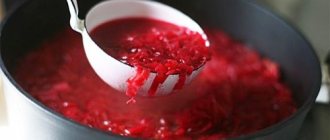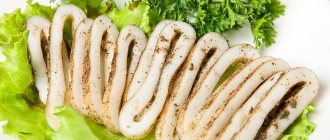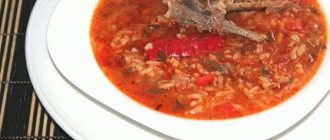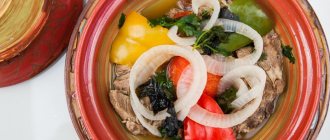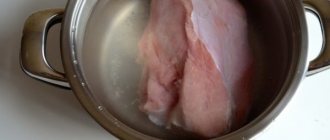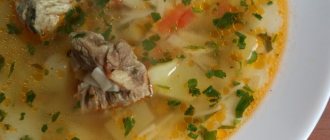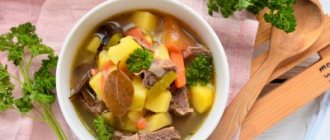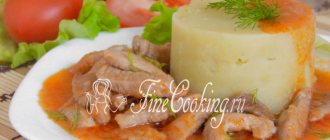Pilaf is a dish that is popular in many countries and has many cooking options. Some nationalities prepare it with seafood, dried fruits, and vegetables, but the classic recipe includes meat. Rice and meat products are a combination of high biological value. Slow carbohydrates and animal protein are all you need to stay in good shape. To reduce the calorie content of the dish, it is better to cook in a slow cooker and use lean meats.
Previously, pilaf was considered a festive treat. The recipes used rice, mung bean, peas and minced meat. We mixed it all with a lot of onions, carrots and garlic. The dish was cooked over an open fire and a lot of oil was added.
Nowadays, any meat, fish, seafood or vegetables are used to prepare pilaf. The cereal part of the dish is not only rice, but also other cereals (bulgur, millet), as well as legumes (chickpeas, mung beans, lentils). Mandatory seasonings: cumin, barberry, hot red pepper. Without these spices, you will just end up with rice porridge with meat.
In addition to its unsurpassed taste, pilaf is also good for health:
- 1. Grain is well absorbed by the body, especially if rice was used during cooking.
- 2. Meat provides the body with animal protein.
- 3. Amino acids in the dish help with stress, depression, and insomnia.
- 4. Carrots are rich in vitamin A, which is essential for cell growth and development.
- 5. Onions contain vitamin C, enhance the production of gastric juice and promote rapid digestion of food.
In general, eating pilaf has a beneficial effect on the functioning of the digestive tract; dietary recipes are indicated for chronic diseases of the esophagus.
Pilaf is a high-calorie and easily digestible dish. The main components are rice, carrots, and various spices. The level of BPJU of a product depends on the type of meat.
Table of calorie content and nutritional value of a dish cooked in a frying pan, saucepan or cauldron:
| Recipe | Calorie content , kcal per 100 grams | Proteins, g | Fats, g | Carbohydrates, g |
| With Chiken | 174 | 9 | 8 | 17 |
| With chicken breast | 152 | 11 | 4,7 | 16,2 |
| With beef | 220 | 8 | 4 | 74 |
| With turkey | 167 | 10 | 8 | 23 |
| With lamb | 149 | 5 | 10 | 9 |
| With pork | 204 | 6,5 | 10 | 23 |
| Without meat | 63 | 1,1 | 1 | 13 |
The number of calories and nutritional value of pilaf depend on the cooking method. A dish cooked in a slow cooker is lower in calories compared to one stewed in a cauldron. This becomes possible due to the absence of frying in vegetable oil.
BZHU and the number of kilocalories in pilaf cooked in a slow cooker:
| Recipe | Number of kcal per 100 g | Proteins, g | Fats, g | Carbohydrates, g |
| With Chiken | 136 | 8 | 6 | 12 |
| With chicken breast | 128 | 5 | 4 | 18 |
| With beef | 155 | 7 | 8 | 13 |
| With turkey | 138 | 7 | 6 | 13 |
| With lamb | 120 | 6 | 9 | 7 |
| With pork | 137 | 5 | 6 | 16 |
| Without meat | 50 | 1 | 1 | 11 |
Meals prepared in a slow cooker can be given to children, the elderly and those who suffer from chronic gastrointestinal diseases.
The calorie content of pilaf can be easily reduced using dietary recipes. Cooking in a slow cooker will help you avoid frying foods in oil, and vegetables or lean meats will not add extra pounds.
If you have diabetes, it is not recommended to use white rice for cooking. Overweight people should not use lamb, pork; it is better to prepare dietary recipes with fish, chicken, turkey or vegetables.
The dish can be made exotic, but at the same time no less tasty and healthy: add fish, shrimp, squid, mussels to it. Seafood will saturate the body with protein and iodine. Those who have given up food of animal origin may well enjoy rice with vegetable additives.
This is a PP recipe: A dietary dish prepared in accordance with the principles of proper nutrition.
Vegetarian pilaf will appeal to those who have only recently given up meat. In taste and appearance, pilaf with soy chunks resembles regular pilaf with meat. Preparing vegetarian pilaf does not take much time.
Cooking time: 50 min.
- Rice 200 gr.
- Soy chunks 50 gr.
- Carrot 1 pc.
- Onions 2 pcs.
- Olive oil 5 gr.
- Dried dill 3 gr.
- Spice mixture 3 gr.
Calories: 204.69 kcal
Carbohydrates: 38.86 g
This dish can be eaten for lunch and dinner. Suitable for vegetarians.
Prepare the ingredients. Wash and peel the carrots and onions. Sort through the rice.
Soak the soy chunks for half an hour in warm water. Next, cut into small pieces.
Rinse the rice. Soak also for half an hour.
Grate the carrots and onions on a fine grater. Heat oil in a deep saucepan, fry carrots and onions, add soy chunks. Add dried dill and spices. Simmer the soy chunks with vegetables over low heat for about 5 minutes. Add rice, cover with water. The water should cover the rice by about half a centimeter. Close the lid and leave to simmer over low heat for about 15 minutes.
The pilaf is ready, enjoy your meal.
For pilaf, it is advisable to use short-grain rice. I didn't add salt as there was enough in the spice mixture. If you have spices without adding salt, do not forget to add salt to the pilaf during cooking.
Components and chemical composition of pilaf with pork
The dish prepared according to the classic recipe contains:
Thanks to the large list of ingredients, pilaf contains most of the nutrients necessary for the body to function properly.
| Nutrient name | Percentage of the daily requirement for an adult. |
| Vitamin A | 2 % |
| Beta carotene | 2 % |
| Vitamin B1 | 7,5 % |
| Vitamin B2 | 1,8 % |
| Kholin | 3 % |
| Vitamin B5 | 2,9 % |
| Vitamin B6 | 5 % |
| Vitamin E | 6,7 % |
| Vitamin C | 1,3 % |
| Vitamin PP | 6,6 % |
| Potassium | 3,8 % |
| Calcium | 1,8 % |
| Magnesium | 2,6 % |
| Sodium | 20 % |
| Phosphorus | 5,5 % |
| Chlorine | 17 % |
| Iron | 3,2 % |
| Cobalt | 9,2 % |
The finished dish also contains vitamins B9 and K, and microelements (iodine, manganese, copper, molybdenum, selenium, fluorine, chromium, zinc).
Lenten pilaf with raisins
This recipe, judging by the number of ingredients indicated in it, is designed for a large company. It can be an excellent side dish and complement the holiday menu. This pilaf can be a hearty and tasty meal for unexpected guests, since it is prepared quite quickly and simply, and every housewife usually has all the necessary ingredients. By the way, the recipe for such a dish will also appeal to those who like to relax in the lap of nature and at the same time eat deliciously without extra effort and financial costs. And if you want to cook this pilaf for dinner for a small family, then simply reduce the amount of ingredients. Just do it so as not to upset the proportions.
Ingredients:
- rice - 1 kilogram
- raisins - 150 grams
- large onions - 3 pieces
- carrots - 500 grams
- sunflower oil - 250 grams
- black cumin - 2 teaspoons
- ground black pepper - 1 teaspoon
- salt - 2 teaspoons
Cooking method:
Peel and wash the vegetables. Chop the carrots into strips no thicker than 3 millimeters, and the onion into half rings. Take a cauldron, pour oil into it and put it on the fire to warm up. When the first smoke appears, add the onion to the bowl and fry it until slightly brownish. Please note that the color of the pilaf will depend on the quality of the onions. Then add the carrots and cook until soft. To ensure that the vegetables in the cauldron are cooked evenly, do not forget to stir them (at least 3-5 times during the entire frying period).
When the zirvak is brought to the desired condition, add about 2 liters of cold water to it, add salt, ground black pepper and cumin. The taste of the gravy should be salty and rich. Place pre-washed and drained raisins into the cauldron as well. Rinse the rice in warm water, draining until it runs clear, and place on top of the vegetables and raisins. This recipe does not include the now customary soaking of cereals. Level the layer of rice, and turn the heat under the cauldron to maximum so that all the water leaves the surface.
Now you need to do as Uzbek housewives usually do. Collect the rice from the edges to the center in a mound and use a knife to make holes in it, reaching to the very bottom of the cauldron. Let the remaining moisture boil away. Then cover the cauldron with a towel and a lid on top and turn the heat to minimal. This will prevent steam from leaving the cauldron quickly, so the rice will cook properly. Typically, the process takes about half an hour. After this time, the pilaf should be mixed and placed on a large dish. Serve it with salad, and it’s better to wash it down with green tea. Bon appetit!
Return to content
The benefits and harms of the dish
Pilaf with pork, despite its high calorie content, has a positive effect on the body. After eating the dish, a person retains a feeling of fullness and vigor for a long time. This effect is achieved due to the presence of proteins, as well as animal and vegetable fats.
Due to the high content of various vitamins, the product in question can improve the functioning of the body’s immune system, normalize the functioning of the cardiovascular system and visual organs. Since rice is a natural sorbent, the eaten dish allows you to remove waste and toxins from the body.
The presence of dietary fiber helps lower cholesterol levels, which makes consuming animal fats safer. The vegetables included in pilaf can improve the condition of the skin, hair and nail plates, and reduce the body’s susceptibility to viral diseases.
When consumed in moderation, the dish in question does not have a negative effect on the body, but it is not recommended to be included in the diet of obese individuals. Also, you should not include pilaf with pork in the diet of children of primary preschool age.
Meatless pilaf with champignons
Housewives who have at least once cooked pilaf with mushrooms will say with confidence that they are an excellent substitute for meat. It is important to choose high-quality rice, not to skimp on seasonings and vegetables, and to maintain all the necessary proportions and stages of preparation. Then your loved ones will appreciate the dish you served for dinner and will probably ask for more. Despite the fact that the recipe for lean pilaf with mushrooms is simple, the taste of this dish is rich and rich. And how to achieve this, read below.
Ingredients:
- long grain rice - 900 grams
- large onions - 3 pieces
- large carrots - 3 pieces
- champignons - 800 grams
- sunflower oil - 300 milliliters
- garlic - 2 small heads
- mixture of spices (paprika, coriander, hot red pepper) - to taste
- black cumin
- salt - to taste
As usual, start with the vegetables: wash and peel them. Remove all peels from the garlic. Chop the carrots into thin strips and the onion into half rings. Wash the mushrooms and cut them fairly large, preferably into halves. If they are very large, then in smaller pieces. Rinse the rice very thoroughly and then soak in cold water for 30 minutes.
Take a cauldron, heat vegetable oil in it and start preparing zirvak. To do this, fry the onion over medium heat until golden brown, then the carrots until soft. Add salt and spice mixture. After this, add the champignons to the cauldron and increase the heat. Fry the mushrooms for 3-4 minutes, stirring constantly. They should absorb the aroma of the spices. Then pour 1.5 cups of boiling water into the cauldron, put the garlic in it and leave the zirvak to cook over medium-low heat for about 20 minutes.
When this time has passed, taste the gravy and add more salt if necessary, taking into account that no more salt will be added to the rice. Don’t forget to remove the garlic from the zirvak, because it has already given off all its aroma. Strain the rice cereal and place it in an even layer on top of the vegetables and mushrooms. Carefully, so that the ingredients do not mix prematurely, add water. It should barely cover the rice. Make the fire under the cauldron maximum. Water, rising from below, will pass through all layers of the future pilaf and steam it, so to speak. If the rice is not steamed evenly, the recipe allows you to stir it with a spatula. But this must be done very carefully so as not to catch the zirvak.
When you notice that the cereal has become transparent and the water has dropped to the level of vegetables and mushrooms, cover the cauldron with a lid. Before this, gather the rice from the edges into a mound and stick the garlic into it, sprinkle everything on top with cumin, and turn the heat to minimum. To prevent steam from escaping too quickly, cover the cauldron with several towels. After 30 minutes the pilaf is ready. Stir it and quickly serve it on a large beautiful platter.
Return to content
Contents of the BZHU
The table shows the average values of proteins, fats and carbohydrates per 100 g of finished dish:
| Name | Quantity |
| Squirrels | 8.81 g |
| Fats | 9.3 g |
| Carbohydrates | 21.47 g |
Pilaf with pork.
Calorie content and nutritional value of the dish. Depending on the ingredients used, the indicators may change up or down.
Vegetarian pilaf with red beans
Those who are at least a little familiar with vegetarian cuisine have often come across dishes that include legumes in the recipe. And this is quite natural, because thanks to their use it is possible to prepare very nourishing and tasty food. Lenten pilaf with beans is considered a traditional Indian food. It is very useful, unusual and looks very appetizing, so it will decorate any table, both festive and everyday. The recipe for this dish is so simple that even a person without special culinary talent can easily master it.
Ingredients:
- long-grain rice “Basmati” - 500 grams
- red beans - 350 grams
- carrots - 300 grams
- large onion - 1 head
- garlic - 1 head
- raisins - 100 grams
- sunflower oil - 50 grams
- salt - to taste
Cooking method:
Beans must be soaked overnight in cold water. This will allow her to cook faster later. Rinse the rice thoroughly and also leave in cool water, although only for 30 minutes. During this time, wash and peel the vegetables. As always, for pilaf, cut the onion into half rings, and for the carrots, the recipe calls for a very unusual chopping method. It needs to be grated, and even on a fine grater. This is necessary to give the pilaf a beautiful color.
Take a saucepan with a thick bottom, pour sunflower oil into it, then layer strained beans, grated carrots, onion half rings and raisins. Add salt to each layer. As you can see, the recipe does not prescribe any pre-frying of the ingredients; there are practically no spices. Therefore, the dish can well be called dietary, because there is also negligible amount of vegetable oil in it.
When you have laid all the products in layers in a cauldron or pan, carefully spread the rice on top of them, do not forget to drain the water from it first. Stick the garlic into it, disassembling the head into cloves, but without removing the skin. Now pour boiling water over the future pilaf so that the rice is covered by about 2 fingers. Cook for 40 minutes over medium heat without stirring.
After the specified time, use a wooden spatula to connect the layers together and place the vegetarian pilaf with beans on a large dish. Serve with vegetable salad. As you can see, you can cook pilaf even without traditional zirvak. If you doubt that it will turn out well, be sure to try this recipe, and as a result, you will be very surprised at how tasty this simple rice dish can be.
In our country, the observance of Orthodox religious fasts has recently become increasingly popular. Some people really find in this a way of spiritual cleansing, while others, under such a plausible pretext, are trying to get rid of excess weight and simply use a significant deterrent. But in both the first and second cases, people are faced with the monotony of their menu. Agree, inventing masterpieces from a very limited list of products is incredibly difficult. Almost every familiar recipe includes meat or fish.
Therefore, lean pilaf, which can be easily prepared following the examples described above, will certainly become the signature dish of your, for some period, rather meager diet. It was also appreciated by vegetarians who, due to their convictions, generally refuse meat and fish products. Therefore, you shouldn’t sigh sadly once again, choking on your boring oatmeal. It’s better to choose the recipe you like and start preparing delicious, albeit lean, food.
www.JLady.ru
Pilaf is a traditional oriental dish. Its classic composition includes meat, rice, vegetables, fat and a large number of spices. Fresh pilaf is incredibly aromatic and tasty, but those losing weight often refuse to eat it, fearing the huge amount of calories. Meanwhile, the dietary version of this dish is no less tasty and does not threaten your figure at all.
Depending on the ingredients, the nutritional value of a dish varies over a fairly wide range. The traditional version using fat tail fat contains about 300 kcal per 100 g, and the light version – 200. But you can enjoy pilaf with mushrooms without a doubt, it contains only 92 calories per standard 100 g.
At first glance, pilaf seems quite simple to prepare, but this is misleading. To prepare a delicious classic dish, you need to know all the nuances and follow all the rules, because to obtain it, 4 types of heat treatment are used: frying, stewing, boiling and simmering.
To prepare low-calorie pilaf you need to use dietary recipes, carefully select ingredients and observe proportions. So, the main differences are as follows.
To prepare the traditional version of the dish, incredibly high-calorie fat tail fat is used. In dietary pilaf, it can be replaced with vegetable oil; it does not contain as many calories and, due to its consistency, its consumption is much lower, which means that less quantity can be used for cooking.
Traditional meat for pilaf is pork and lamb. These types are very high in calories, especially when combined with fat tail fat. For a lighter version of a rice-based dish, you can use rabbit, veal, turkey or chicken. This meat is considered lean and does not require a large amount of oil for frying, as it cooks extremely quickly.
Those who want to keep the calorie content of this dish to a minimum can add mushrooms or even beans to the pilaf instead of meat. The taste will not suffer at all from this, but the calories on the plate will be an order of magnitude less.
Another ingredient in classic pilaf that can affect the overall calorie content of the dish is vegetables. You can add more carrots and onions, this will only improve the taste of the dish. You can also add green peas, corn, asparagus and any other vegetables that are popular in the family to the low-calorie pilaf. Of course, the resulting dish cannot be called pilaf, but there is no doubt that it will be tasty and aromatic.
And, of course, spices play a big role in burning fat; it’s not for nothing that pilaf is so richly flavored with them. Zira, golden turmeric, aromatic barberries - this is a classic set; those losing weight can also add cayenne pepper to the dish. And don’t forget about the fat-burning properties of garlic; it’s not for nothing that this product with a specific smell appears in all versions of the recipe.
In addition to the ingredients, the method and time of preparation also plays a role. The most dietary heat treatment is stewing in a slow cooker, even without the use of oil or with a minimal amount of it. This method will be of interest to those who are used to counting points while following the Kremlin or a similar diet. For the rest, a saucepan or frying pan with a thick bottom or a classic cast-iron cauldron is quite suitable.
So, to prepare low-calorie pilaf you will need: 200-250 g of chicken fillet or any other lean meat, 200 g of rice, preferably steamed; the oiled version is not suitable, as it already contains fats. 2 small onions, 2 medium-sized carrots, 5-6 pieces of dried apricots, 2 tablespoons of vegetable oil, better than olive oil, without a pronounced odor, garlic, salt, pepper, spices for pilaf: turmeric, cumin, barberry.
The first stage is preparing all the ingredients for cooking. The meat must be thoroughly washed, all visible fat removed from its surface, as well as, if any, veins, bruises, etc. Cut into cubes measuring 2*2 cm. Peel the vegetables and cut into small cubes. Rice should be thoroughly washed 2-3 times in room water. The drained water should be almost transparent with a slight milky tint. After this, pour cold water over the rice and set aside to swell.
The second stage is preparing zirvak. It is necessary to put a cauldron or pan on the fire, let it heat up, but not get hot, then pour in vegetable oil. Add half the spices and chopped onion to it, simmer until it becomes transparent, but not golden. Then add carrots and dried apricots and fry for another 5 minutes. Then you need to put the meat, cut into pieces, into the cauldron.
It is important to be careful; hot oil and wet fillet combine to create scalding splashes. Stirring lightly, fry the mixture until the meat is browned. Then you need to add a glass of boiling water to the cauldron and leave to simmer over low heat. The resulting golden-colored aromatic mixture is zirvak – the main ingredient.
The third stage is the actual preparation of pilaf. Next, put the washed rice into the container and carefully level it with a spoon. Liquid should appear on its surface if it is traditional pilaf; the dietary recipe does not suggest this. Next, water is carefully poured in in a thin stream, trying not to damage the structure of the rice and not to mix the layers, because this is one of the main conditions for preparing a delicious oriental dish. Water should cover the cereal by 1-2 cm.
The fire is made maximum until it boils, after which it is reduced to a minimum and the cauldron is covered with a tight-fitting lid. After 15 minutes, you can open the lid slightly and check the readiness of the pilaf. At this stage, garlic is added to the cauldron. If there is not enough water, you can add a little boiling water, but if there is excess liquid, you need to help it evaporate by removing the lid and increasing the heat. Stir rice and meat only after turning off the heat and partially cooling the dish.
Of course, such pilaf cannot be called traditional, and some will even call it rice porridge with chicken and vegetables. It doesn’t matter what you call this dish, the main thing is that it is tasty, aromatic, healthy and contains only 180 kcal per 100 g of finished product. And if you reduce the amount of oil, then even less.
Diet pilaf is an excellent dish for those who are losing weight or maintaining weight. When prepared correctly, it contains a minimum amount of calories, and the taste is excellent. And what’s important is that pilaf, in any cooking method, gives you a long feeling of fullness.
lady.qip.ru
Two of my friends from our big me (in quotes, of course) talk about health problems - you can’t eat fatty foods, you can’t eat fried foods, you have a strict diet. But what about pilaf, kebabs and other delicacies that we regularly prepare on our hikes? This gave me the idea to look and try what a completely dietary pilaf would look like, for example, from chicken breasts, cooked without a drop of oil and without frying the food? What might come of this? I've been nurturing this idea for a long time, but I just never got around to it.
Yesterday, I finally went to get some chicken and started the experiment. I didn’t make it specifically from chicken breasts, this is not important in my case, the main thing is the opportunity itself and what will come of it?
Chicken - 500g. Rice - 500g. Two medium onions. Two medium carrots. Salt, spices.
Wash and soak the rice in hot water for about 1.5 hours.
I cut the chicken into small pieces, put it in a deep saucepan, filled it with water to the surface of the contents and put it on the fire. When the water boiled, I removed the foam.
After that, I put onions and carrots on top.
I simmered for about 15 minutes until the carrots went limp, then stirred, added salt and spices (pepper, cumin, barberry).
The zirvak did not simmer for long, about 20 minutes, because... It's not meat, it's chicken, so it doesn't get overcooked at all.
I added soaked and washed rice and filled it with boiling water to the level of the contents, even a little more, but actually this could not be done, it was enough to reach the level of the contents. Increased the fire.
I corrected it for salt and added another pinch of cumin. I also added a few peeled cloves of garlic.
After the water has evaporated, reduce the heat, cover with a lid and simmer for 30 minutes.
The result was a very light pilaf. For color, in principle, you can add a whisper of turmeric or Imeritan saffron, or more carrots. And so, in general, it turned out very well. I ate it with great pleasure. And with lean beef, I think it will be even tastier.
Summary: has a right to exist. It's quick and easy to prepare. Tasty.
sartana.livejournal.com
When you talk about pilaf, what immediately comes to mind? Oriental, spices and herbs, something incredibly tasty and aromatic, but at the same time very fatty and high in calories. Those who have tried pilaf cannot remain indifferent to it. But some people watch their figure and count calories, while others have problems with the digestive system and liver that do not allow them to eat such fatty and heavy foods... But if you really want to, you can always find a way out. Let's try to prepare a dietary version of this delicious dish!
How to reduce the calorie content of pilaf?
To reduce the calorie content of pilaf with pork:
- It is necessary to choose the right meat products. It is advisable to use fillet parts without lard. When using a neck piece, it is recommended to trim off the fat. Thus, the energy value of the dish can be reduced to 250 kcal per 100 g of product.
- You should choose fats with lower calorie content. It is recommended to avoid adding animal fats and replace vegetable oil with olive oil. In addition to changing the type of product, it is necessary to reduce its quantity to obtain maximum results.
- It is recommended to select a suitable cooking method. When preparing pilaf in a slow cooker or steamed, the use of fat can be practically eliminated, which allows reducing the energy value of the dish by an average of 50 kcal.
- It is necessary to change the proportions of the main components and vegetables. By reducing the amount of pork and adding more vegetables, you can significantly reduce the number of calories in the dish. To ensure that the taste of the pilaf does not suffer from a lack of protein components, you can include porcini mushrooms, which have a low calorie content, in the recipe.
- You can replace white rice with brown rice. With such a substitution of products, you can reduce the number of kilocalories by 1/5.
Pilaf with onions and carrots: the fastest recipe
This recipe will really appeal to those of you who are used to saving time and at the same time want to eat delicious and healthy food. It will become indispensable for people involved in sports. This dish is an excellent option if you adhere to fasting or are a supporter of the principles of vegetarian nutrition. The recipe for pilaf is very simple, and if everything is done correctly, the taste of rice and vegetables will exceed all your expectations.
Ingredients:
- large onions - 3 pieces
- medium sized carrots - 3 pieces
- rice - 2 cups
- sunflower oil - 200 milliliters
- salt, spices - to taste
Cooking method:
In the case of lean pilaf, special attention should be paid to the choice of rice. The fact is that if in the version with meat it is not the main ingredient, then here the quality of the entire dish as a whole depends on its taste. You should not buy rice that is called parboiled, since heat treatment has already made it, so to speak, neutral. Better pay attention to cereals with white round grains. Of course, long rice will also work, but it may not turn out fluffy.
So, here is the recipe for how to prepare healthy vegetable pilaf. Rinse the rice thoroughly; the water drained from it should become clear. Then soak it and set it aside for an hour and a half. At this time, peel and wash the vegetables. Cut the onion into half rings. Try not to do this too thinly, because it is important that it fry as little as possible during the cooking process. But carrots, on the contrary, need to be cut into strips the thickness of a match so that they can be stewed faster. We can say that the secrets of proper chopping of vegetables, which the lean pilaf recipe provides, have already been revealed to you.
Now you need to choose the right vessel in which to prepare this dish. If you have a cauldron or pan with thick walls, take that one. In addition, the container should be spacious so that the water does not “run away”, but gradually turns into steam, thanks to which the rice is cooked. Pour vegetable oil into the cauldron, and when it warms up well, add the onion cut into half rings and cook over high heat. It is very important to avoid excessive frying or burning. So stir the onions constantly until they become translucent and slightly golden.
Then place the carrot sticks in the cauldron and continue cooking until they become soft. There is no need to fry, so don’t stop stirring your vegetable zirvak. When it has simmered sufficiently, you can strain the rice. Pour boiling water into the cauldron; for this amount of ingredients you will need about 3 cups. Now add salt and season the gravy. Make its taste rich in spices; zirvak should be salty. Now place the rice in the cauldron and cover with a lid.
It's time to move on to the secrets of temperature conditions, thanks to which pilaf will never turn into porridge. So, the recipe calls for cooking the dish in 12 minutes. The first 3 of them are on high heat, then 7 more are on medium, and the final 2 minutes are on low. All this time, steam should not escape from the cauldron. Therefore, if the lid does not fit very tightly, place a towel on top.
After 12 minutes, remove the pilaf from the stove, but do not open it. He must, as they say, “get there” or “rest.” But after 20 minutes you can admire the result of your labors. If desired, add finely chopped garlic to the dish or sprinkle a plate of pilaf with herbs when serving. If you did everything correctly and did not violate the cooking recipe, the rice will surprise you with its crispness and excellent taste. And if it didn’t work out the first time, then what’s stopping you from improving your culinary skills and trying again?
Return to content
